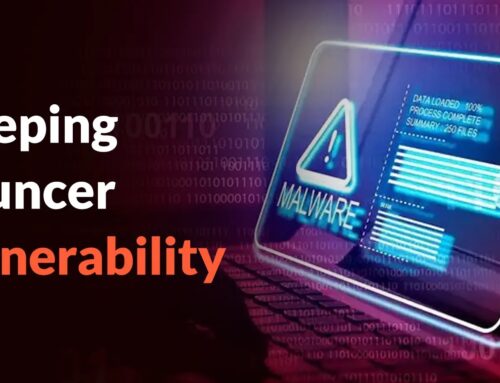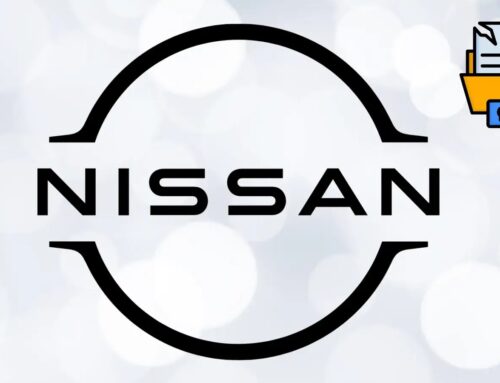
Email Security Is Stuck in the Antivirus Era: Why It Needs a Modern Approach
You’ve invested heavily in endpoint detection and response (EDR), deploying advanced telemetry, rapid isolation capabilities, and automated rollback features across your entire fleet of laptops. Yet, a critical vulnerability persists: the corporate mailbox. This primary gateway for attackers often remains guarded by technologies that are, by modern standards, akin to a 1990s-era antivirus filter. This imbalance in security posture leaves organizations exposed.
Email is not merely a static stream of messages; it is a dynamic, constantly evolving attack vector. Treating it otherwise is a fundamental misstep in cybersecurity strategy. The reliance on outdated methodologies for email security, while endpoints benefit from sophisticated, real-time defenses, creates a significant blind spot. This disparity is precisely what malicious actors exploit.
The Obsolete State of Email Security
The core issue is that many organizations continue to approach email security with a mindset rooted in signature-based detection and rudimentary content filtering. This approach, while once effective against known malware, fails miserably against sophisticated phishing campaigns, zero-day exploits, and advanced persistent threats (APTs). These legacy systems act as a static barrier, incapable of adapting to the rapid evolution of attack techniques.
Consider the contrast: your EDR solutions offer real-time threat intelligence, behavioral analysis, and autonomous remediation. Your email security, however, is often stuck performing basic checks, easily bypassed by polymorphic malware or highly convincing social engineering tactics. This leaves the “front door” of your organization — the inbox — wide open.
Why Traditional Antivirus Falls Short for Email
- Signature-Dependency: Traditional antivirus relies on known threat signatures. New or modified malware variants, often used in targeted email campaigns, simply bypass these defenses.
- Lack of Contextual Awareness: These systems often scan individual attachments or links in isolation, failing to analyze the broader context of an email, such as sender reputation, linguistic anomalies, or behavioral patterns that indicate phishing.
- Inadequate Against Social Engineering: Phishing, spear-phishing, and business email compromise (BEC) attacks leverage human psychology, not just malware. Legacy filters are ill-equipped to detect sophisticated psychological manipulation.
- Limited Remediation Capabilities: Once a malicious email lands, the remediation options are often manual and slow, contrasting sharply with the automated rollback functions of modern endpoint security.
The Dynamic Nature of Email Threats
Malicious email campaigns are dynamic, not static. Attackers continuously refine their techniques, from crafting hyper-realistic spoofed domains to employing evasion techniques for their payloads. The threat landscape demonstrates this constant evolution:
- Polymorphic Malware: Variants that change their signature to evade detection. For example, a new loader could be delivered via email to bypass traditional antivirus, eventually dropping a more dangerous payload designed to exploit a vulnerability like CVE-2023-38831.
- Advanced Phishing Kits: Easily available toolkits that allow attackers to create convincing, multi-stage phishing campaigns, often leveraging legitimate cloud services to host malicious content.
- Zero-Day Exploits: Unpatched vulnerabilities like those seen in some file format parsers can be weaponized and distributed via email. When a new vulnerability emerges, such as CVE-2024-21319 (a critical MS Office RCE), email often becomes the primary delivery mechanism.
- Business Email Compromise (BEC): These attacks don’t necessarily involve malware. They rely on impersonation and manipulation, tricking employees into making fraudulent transfers or divulging sensitive information.
Remediation Actions: Modernizing Email Security
To bridge the gap between endpoint and email security, organizations must adopt a multifaceted, modern approach. This involves moving beyond simple filtering to encompass advanced threat detection, user education, and rapid response capabilities.
- Implement Advanced Email Security Gateways (SEG): Look for SEG solutions that offer more than basic antivirus. These should include sandboxing, URL rewriting and analysis, attachment stripping and analysis, and advanced threat intelligence feeds.
- Leverage AI and Machine Learning: Utilize solutions that employ AI and ML for anomaly detection. These technologies can identify subtle deviations in email patterns, sender behavior, and content that human analysts or traditional rules might miss.
- Focus on Behavioral Analysis: Shift from signature-based detection to understanding malicious behaviors. This includes analyzing the entire email chain, sender history, and recipient context.
- Invest in DMARC, SPF, and DKIM: Properly configure these email authentication protocols to prevent email spoofing and ensure that legitimate emails are not flagged as spam, while illegitimate ones are blocked.
- Continuous Security Awareness Training: The human element remains the weakest link. Regular, engaging, and simulated phishing exercises are crucial to educate employees about identifying and reporting suspicious emails. Training should evolve with current threat trends.
- Integrate Email Security with broader SOAR/SIEM: Ensure your email security alerts and logs feed into your Security Orchestration, Automation, and Response (SOAR) or Security Information and Event Management (SIEM) systems. This allows for centralized visibility, correlated threat detection, and automated response workflows.
- Consider Post-Delivery Detection and Remediation: Implement solutions that can continuously scan mailboxes for dormant threats or new intelligence, and automatically quarantine or remove malicious emails even after they have been delivered.
Relevant Tools for Email Security Modernization
| Tool Name | Purpose | Link |
|---|---|---|
| Proofpoint Email Security and Protection | Advanced threat protection, anti-phishing, anti-spam, and data loss prevention for email. | https://www.proofpoint.com/ |
| Microsoft Defender for Office 365 (MDO) | Comprehensive email and collaboration security for Office 365, including anti-phishing, safe attachments, and safe links. | https://www.microsoft.com/en-us/security/business/threat-protection/microsoft-defender-for-office-365 |
| Mimecast Email Security | Email security, archiving, and continuity, offering anti-phishing, brand exploitation protection, and large file send. | https://www.mimecast.com/ |
| Valimail (DMARC as a Service) | A platform to automate DMARC enforcement, crucial for protecting against email spoofing and impersonation. | https://www.valimail.com/ |
| Cofense PhishMe | Phishing simulation and training platform to educate users on identifying and reporting phishing attacks. | https://cofense.com/products/phishme/ |
Conclusion
The disparity between modern endpoint security and antiquated email security practices is an unacceptable risk. Organizations must recognize email as the highly dynamic and critical attack vector that it is. By adopting a comprehensive, multi-layered approach that integrates advanced threat detection, behavioral analysis, robust authentication, and continuous user education, security teams can finally bring their email defenses out of the antivirus era and align them with the sophistication of modern cyber threats.
Ignoring this critical gap is akin to installing reinforced steel doors while leaving the windows wide open. The front door of your digital infrastructure — the corporate mailbox — demands the same advanced, real-time protection afforded to your endpoints.





